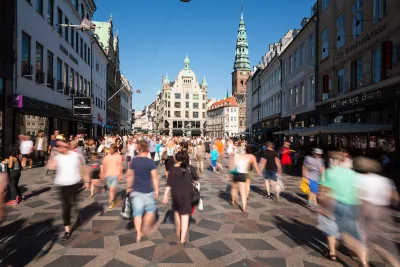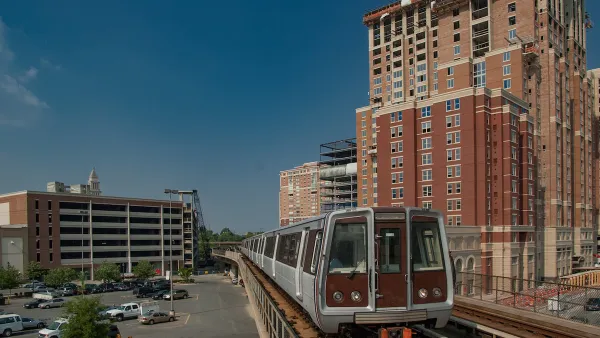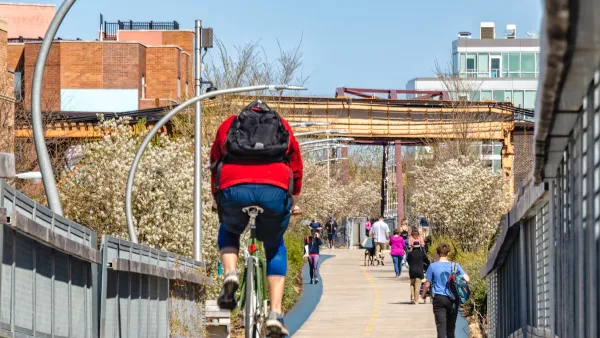The vibrancy of a neighborhood may be defined by what people can see in their immediate vicinity.

An article by Tristan Cleveland in Happy Cities describes how visual cues in the immediate field of vision can make a significant impact on the vibrancy of urban streets.
Cleveland describes a study by researcher Todor Stojanovski, who noticed that places like Copenhagen’s Ørestad Station, an ostensibly transit-oriented development, still lack street life despite access to transit and urban amenities within a 400-meter radius. Stojanovich’s analysis found that “The majority of streetlife happens within 100 metres of stations.”
For Stojanovich, this is explained by the fact that a human can generally see clearly for roughly 100 meters. Thus, “What matters most for supporting commercial space isn’t what people can theoretically walk to, but what they can see.” Urbanist Jan Gehl has discussed a similar theory, calling the concept the “social field of view.” For Gehl and Stojanovich, “This is the scale that matters most for creating successful streets.”
Cleveland notes, “Four hundred metres remains the right scale for some things: People will find their way to their homes and office jobs without needing to see them from the transit station. But to create vibrant streets and public spaces, and to support street-level businesses, designers have to focus on the human eye.”
FULL STORY: The secret to vibrant streets? Focus on what people can see

Analysis: Cybertruck Fatality Rate Far Exceeds That of Ford Pinto
The Tesla Cybertruck was recalled seven times last year.

National Parks Layoffs Will Cause Communities to Lose Billions
Thousands of essential park workers were laid off this week, just before the busy spring break season.

Retro-silient?: America’s First “Eco-burb,” The Woodlands Turns 50
A master-planned community north of Houston offers lessons on green infrastructure and resilient design, but falls short of its founder’s lofty affordability and walkability goals.

Test News Post 1
This is a summary

Analysis: Cybertruck Fatality Rate Far Exceeds That of Ford Pinto
The Tesla Cybertruck was recalled seven times last year.

Test News Headline 46
Test for the image on the front page.
Urban Design for Planners 1: Software Tools
This six-course series explores essential urban design concepts using open source software and equips planners with the tools they need to participate fully in the urban design process.
Planning for Universal Design
Learn the tools for implementing Universal Design in planning regulations.
EMC Planning Group, Inc.
Planetizen
Planetizen
Mpact (formerly Rail~Volution)
Great Falls Development Authority, Inc.
HUDs Office of Policy Development and Research
NYU Wagner Graduate School of Public Service




























